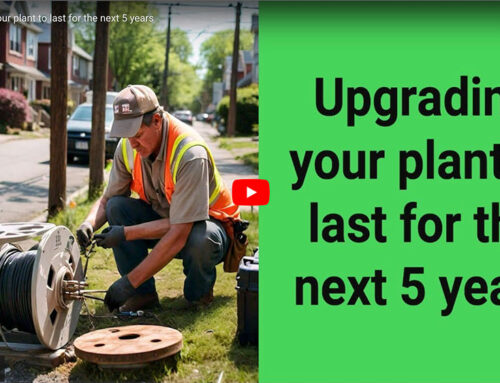Advanced Troubleshooting in a DOCSIS 3.0 Plant – Missed SCTE’s Cable-Tec?
If you missed the 2011 SCTE Cable-Tec Expo, I am making available my presentation and white paper on “Advanced Troubleshooting in a DOCSIS 3.0 Plant”. Each speaker had only 20 minutes to cover topics that could easily last hours, so the presentations are understandably brief. Below you will find my presentation in “Slideshare” for online viewing as well as a fully downloadable PowerPoint version. The PowerPoint version also has reader notes attached at the bottom of each slide which you may find useful. In addition, the animations work a little better in the downloadable version.
Finally, I have attached the complete white paper from my presentation which goes into a little more technical background on the subject matter. Enjoy the read and feel free to let me know if you have any questions.
SlideShare Version of the DOCSIS 3.0 Presentation





I noticed in the last few slides, it noted the best slm to use is one that can allow you to see all the bonded upstream channels at once. Do you have any recommendations for slm’s that support said feature, or at least one that supports checking them channel by channel as it showed in the slide?
Hi Matthew,
Although I am leaving money on the table, I do not recommend, sell or promote specific equipment or vendors. There is good equipment out there and bad equipment. My company, The Volpe Firm, is frequently approached to either sell or recommend products to my clients for commission, but often I find myself troubleshooting with different vendor equipment and vendor devices, so it is important that I remain a neutral party. In addition I don’t want a bad recommendation to poorly reflect on my reputation.
My recommendation is that you first get datasheets from available equipment vendors you may be interested in. Next, contact the sales reps/engineers and have them come in and demo the equipment so that you are familiar with how to use the equipment. Ask for a demo unit for one week so that you can test it onsite and record its accuracy / precision against a reference you have available. Do the same with the next vendor and the one after that. By the time you have gone through this experiment with each vendor you should have a pretty good idea of the vendor’s support, the equipment ease of use, its features, and side-by-side accuracy / precision with other equivalent equipment provided you are keeping good notes when you make your measurements. You don’t always get what you pay for and there is a difference from vendor to vendor.
I hope this helps.
Regards,
-Brady